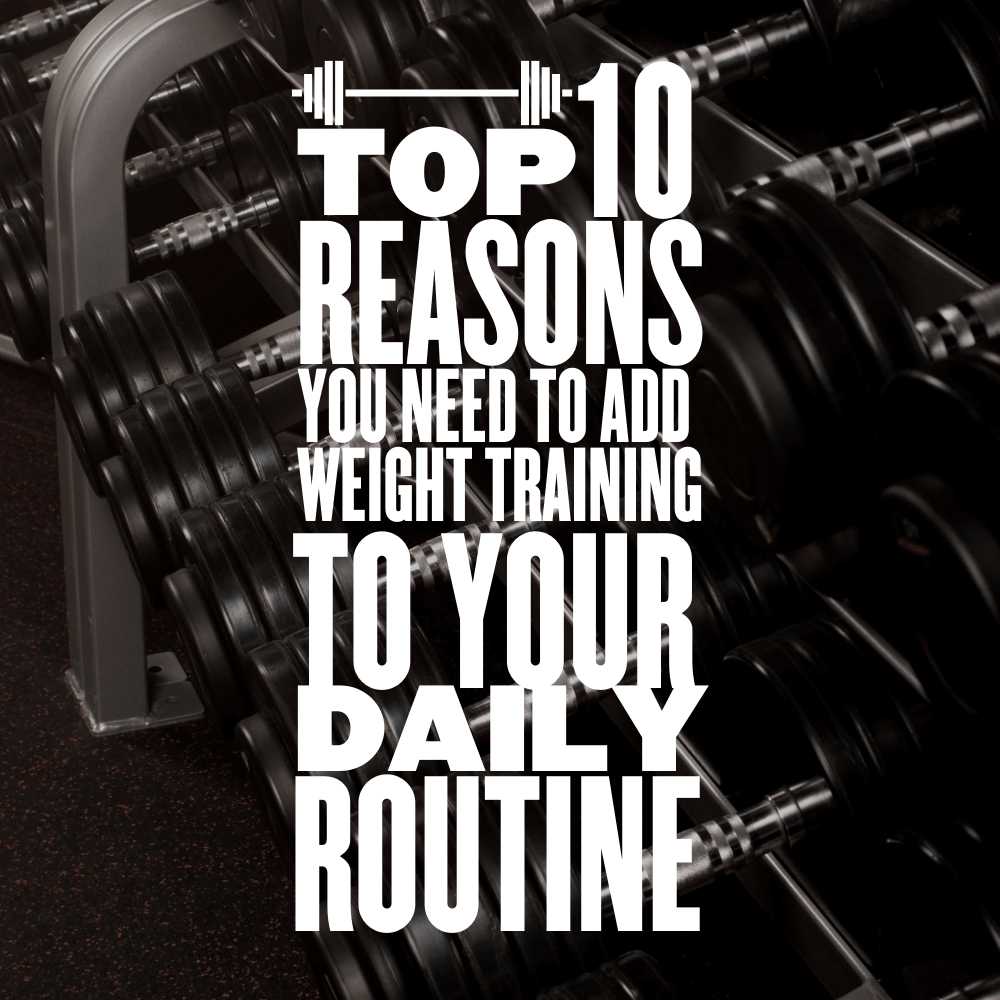
Benefits of Weightlifting for Your Body and Mind
Exercises & Fitness
|
Weight Loss
|
Healthy Lifestyle
9 minute read
Most of us know that strength is important, but that doesn't make it any easier to do it. It may help to know why strength training is so important and what are the benefits of weightlifting, get to know all the ways it can help you look better and feel better. Know more about "Is it good to lift weights everyday?"
Check out the benefits of weightlifting, and get motivated to start strength training today.
Reduces Your Risk of Injury
What types of benefits of weightlifting have? This type of training strengthens everything. Lifting weights also strengthens connective tissue—the ligaments and tendons that keep your body moving well on a regular basis. Strengthening your connective tissue will help you continue to operate in peak condition and protect your body from injuries. Weight training increases bone density as well; helping to create a strong and healthy spine. This reduces the risk of fractures and other pesky things like broken bones. Bad posture? Well, lifting weights can help build that strong back and core which will assist in slowing that lower back pain down.
Increases Balance, Stability, and Flexibility
As we age, the importance of preserving muscle mass through strength training becomes increasingly evident. Muscle loss is a natural part of the aging process, and it can have significant implications for our overall health and well-being. When we neglect to engage in strength training, several adverse consequences can arise.
First and foremost, the gradual decline in muscle mass as we get older is a major contributor to weight gain. Muscles are metabolically active tissues, and they help to burn calories even at rest. As we lose muscle mass, our metabolism tends to slow down, making it easier to gain weight, especially if our dietary habits remain unchanged. Moreover, the loss of muscle mass can also lead to a decrease in strength and functional capacity, resulting in a loss of autonomy and a reduced quality of life.
Another critical aspect of preserving muscle mass is its role in maintaining balance and flexibility, which is crucial for reducing the risk of falls and injuries that become more common as we age. Engaging in strength training exercises can help fortify these muscles, enhance joint stability, and alleviate joint pain and stiffness, allowing older individuals to maintain an active lifestyle comfortably. In summary, not preserving muscle mass with strength training can lead to weight gain, reduced functional capacity, and an increased risk of falls and injuries, making it a vital component of a holistic approach to healthy aging that shouldn't be overlooked.
Helps You Reduce Fat
Lifting weights not only builds lean muscle tissue but also enhances your metabolism. Lean muscle is inherently more metabolically active than fat, which means that as you increase your muscle mass, your metabolism gets a boost, resulting in the burning of more calories throughout the day, even when at rest. This metabolic advantage extends beyond the gym, making regular strength training equally vital as cardio exercise when it comes to shedding excess fat and achieving overall fitness. So, in the pursuit of a leaner and healthier body, incorporating strength training into your fitness routine is a key strategy, as it not only sculpts your physique but also keeps your metabolic engine revved up for sustainable and effective fat loss.
Makes You Stronger
It may seem obvious that lifting weights can make you stronger...but what some people forget is that it doesn't just make you stronger for your workout exercises, it makes you stronger in other areas of your life as well.
When you lift weights on a regular basis, everything else becomes a little easier too - carrying groceries, housework, gardening, carrying the kids, etc., and who doesn't want regular life chores to be a little easier on us?!
Can Increase Bone Density
One of the benefits of weightlifting is increasing bone density. Moreover, engaging in weightlifting has a positive impact on your bone health. Recent studies have demonstrated that individuals with arthritis who incorporated weightlifting into their fitness regimen experienced a reduction in joint pain. This surprising benefit arises from the strengthening of muscles, which serve as effective natural shock absorbers, cushioning and safeguarding the joints during activities that involve impact, such as walking exercise. As you strengthen the muscles surrounding your joints through weightlifting, you provide added support and stability to these vulnerable areas, which not only alleviates discomfort but also fosters improved joint function and mobility, making weightlifting a valuable addition to the arsenal of strategies for managing arthritis and promoting overall joint health.
Help Reduce Belly Fat
Are you ready to bid farewell to that stubborn muffin top? It's time to recognize the growing significance of resistance training, especially as we age, for a multitude of reasons, one of which is effectively combating the accumulation of belly fat. Scientific research has illuminated the remarkable role of high-intensity resistance training in accelerating the process of shedding that unwanted abdominal flab, outperforming cardio activities in this regard. A compelling study published in the International Journal of Cardiology unveiled that engaging in high-intensity resistance training not only yields impressive results in terms of strength and muscle development but also emerges as a potent catalyst for faster and more effective loss of belly fat compared to relying solely on cardio workouts. This discovery underscores the critical synergy between strength training and a trimmer waistline, emphasizing that when it comes to achieving your fitness goals, a well-rounded exercise regimen that includes resistance training can be your ace in the hole for a leaner, healthier physique.
Boost of Confidence
One of the benefits of weightlifting is that you'll increase your confidence. Elevate your spirits and take a proactive stance against stress. Exercise, whether it's through resistance training, cardio workouts, or any form of physical activity, has a remarkable capacity to unleash a cascade of endorphins – those incredible neurotransmitters that act as natural mood elevators, pain relievers, and warriors against the shadows of depression. So, let's embark on this journey together and harness the power of exercise to not only enhance our physical well-being but also nurture our mental health. As we engage in these transformative workouts, we're not just building muscles; we're also boosting our confidence and cultivating a positive mindset. It's a collective lift towards a brighter, more empowered version of ourselves, proving that the benefits of exercise extend far beyond the physical realm, ultimately contributing to a happier and healthier life.
Reducing Health Risk
Reduce the risk of heart disease and diabetes. Weight training can help to improve cardiovascular health by lowering bad cholesterol and increasing good cholesterol, and in turn, this will help to lower blood pressure.
Using weight training as part of your routine will also improve the way the body processes sugar, which may reduce the risk of diabetes. Lifting weights even aids in fighting off inflammation, a marker tied to many diseases. Studies have suggested that regular resistance training sessions, about twice a week, resulted in drops in inflammation in overweight women.
Can Improve Your Sleep
According to a recent study in Preventive Medicine Reports, strength training can help improve your quality of sleep. This is because strength training creates a molecule called adenosine, which tends to cause drowsiness. Researchers found that lifting weights in the morning helped subjects fall asleep about 45 minutes faster. Lifting weights in the evening improved the actual quality of sleep. This may be because resistance training warms the body internally, sort of like a pre-bed bath. Strength training: surprisingly soothing.
Overall Better Life
Strength training can improve brain power over a lifetime, but the effects are perhaps the strongest in older adults suffering from cognitive decline. In one study when men and women ages 55 through 86 with mild impairment performed twice-weekly weight training for six months, they significantly improved their scores on cognitive tests ( Journal of American Geriatrics ). The key might be getting the blood flowing. The youth and older generation also take notice in their everyday activities such as bending to take care of their garden, taking their bagged groceries to the car, and twisting to grab their water bottle from the backseat, all of which are performed with more ease after weight training a few times a week.
The benefits of lifting weights include building muscle, burning body fat, strengthening your bones and joints, reducing injury risk, lowering inflammation staving off chronic disease, and improving heart health. To lift weights safely, it's important to start slow, take rest days, and always use proper form.
Final Thoughts
In closing, the first step is to slowly get into weight lifting. How do you know if you have the right amount of weight when you start? If the last few reps are difficult - you hit gold! You don't want it easy but you also don't want it so difficult that your form begins to decrease which could lead to injury. So think of it like the three bears - you want it just right.
FAQ
Are there mental benefits to weightlifting?
Absolutely. Weightlifting releases endorphins, which can boost mood and reduce stress. It also requires focus and discipline, enhancing mental resilience and determination.
Can seniors benefit from weightlifting?
Yes, weightlifting is beneficial for seniors as it can help maintain muscle mass, improve bone density, and enhance overall mobility. It's important to start with light weights and consult a fitness professional for guidance.
What equipment do I need to get started with weightlifting?
Beginners can start with basic equipment like dumbbells or resistance bands. As you progress, you may consider using barbells, weight benches, and other gym equipment. Proper footwear and workout attire are also important for safety and comfort.
How long does it take to see results from weightlifting?
The time it takes to see results varies depending on factors like consistency, intensity, and nutrition. Some people may notice improvements in strength and energy levels within a few weeks, while noticeable muscle gains typically take several months of consistent training. Patience and dedication are key.



